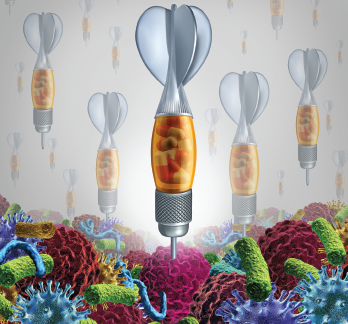
Lightspring / shutterstock.com
CHICAGO—With an ever-strengthening foundation beneath the pathophysiology and prediction of rheumatoid arthritis (RA), the field may soon focus more intently on prevention, an expert said at the 2018 ACR/ARHP Annual Meeting. The session also covered the latest in remission targets and therapy de-escalation.
RA Prevention
Kevin Deane, MD, PhD, associate professor of medicine and principal investigator on the Strategy for the Prevention of RA (StopRA) trial (funded by the National Institutes of Health [NIH]), wanted to spread “enthusiasm that within the next few years, rheumatology will be taking new ‘Intent to Prevent’ approaches to our diseases,” he said, using a phrase introduced by Marvin Fritzler, MD, PhD, of the University of Calgary, Canada.
Growing confidence in understanding the pathophysiology of RA and, in turn, predicting who will develop disease undergirds this shift, he said. Increasing elevations of anti-citrullinated protein antibodies (ACPAs) and cytokines are seen as clinical RA approaches, driven by an understanding of a shared epitope and such risk factors as female sex, smoking, diet, obesity and what we breathe, even though the mechanisms remain murky. A key, underexplored issue is the timing of the influence of these factors, Dr. Deane said.
Multiple studies have shown systemic autoimmunity in the absence of arthritis, making the case that RA-related autoimmunity starts outside the joints, with mounting evidence pointing to the mucosa.1,2
“Knowing when and where RA starts can ultimately lead to effective interventions,” Dr. Deane said.
Prospective studies of ACPA-positive patients with and without rheumatoid factor have shown positive predictive values of 30–60% for RA development within two to six years.
Dr. Dean said, “One, you want to know if someone’s going to get rheumatoid arthritis in their lifetime based on what you can see now. Two, you want to have a sense of when that’s going to happen, both to talk to them,” and as a practical measure for developing clinical trials on prevention that don’t need to follow patients for a long period of time—trials that are essentially unfundable.
A theme underlying RA prevention trials now is that medium to high ACPA titers, combined with a look at symptoms, can provide an idea of how long a patient has until they develop RA, Dr. Deane said.
Risk scores, more refined treatment geared to prevention and assessing biomarkers and events in follow-up to gauge treatment success all could be in the offing, Dr. Deane said.
Once clinically evident disease appears, a patient will likely have RA “forever,” Dr. Deane said, but earlier treatment still means better outcomes, with fewer irreversible changes to the immune system. Prevention also makes sense from a financial standpoint.
“If I can get to the point where I’m actually keeping people in a prevention state where they’re not that sick, and I can see them and keep them well, I think that’s financially going to be an important model going forward for rheumatologists,” he said.

